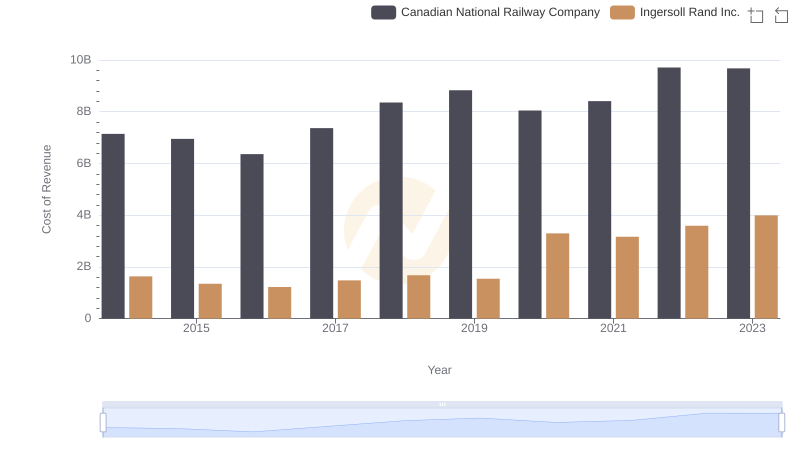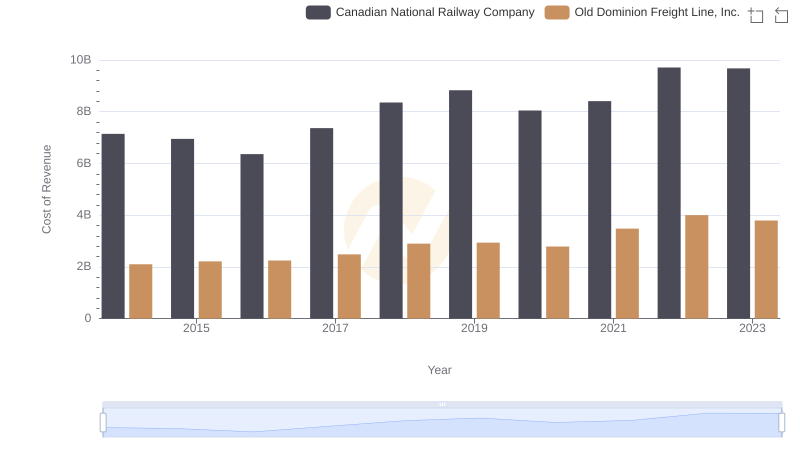| __timestamp | Canadian National Railway Company | Westinghouse Air Brake Technologies Corporation |
|---|---|---|
| Wednesday, January 1, 2014 | 7142000000 | 2130920000 |
| Thursday, January 1, 2015 | 6951000000 | 2281845000 |
| Friday, January 1, 2016 | 6362000000 | 2029647000 |
| Sunday, January 1, 2017 | 7366000000 | 2841159000 |
| Monday, January 1, 2018 | 8359000000 | 3151816000 |
| Tuesday, January 1, 2019 | 8832000000 | 6122400000 |
| Wednesday, January 1, 2020 | 8048000000 | 5657400000 |
| Friday, January 1, 2021 | 8408000000 | 5687000000 |
| Saturday, January 1, 2022 | 9711000000 | 6070000000 |
| Sunday, January 1, 2023 | 9677000000 | 6733000000 |
| Monday, January 1, 2024 | 7021000000 |
Unlocking the unknown
In the world of transportation and logistics, the cost of revenue is a critical metric that reflects the efficiency and operational prowess of a company. Over the past decade, Canadian National Railway Company (CNR) and Westinghouse Air Brake Technologies Corporation (WAB) have showcased contrasting trends in their cost of revenue.
From 2014 to 2023, CNR consistently maintained a higher cost of revenue, peaking in 2022 with a 36% increase from 2016. This reflects their expansive operations across North America. Meanwhile, WAB, a leader in rail technology, saw a significant 232% rise in cost of revenue from 2014 to 2023, highlighting their aggressive growth and innovation strategies.
These trends underscore the dynamic nature of the transportation sector, where operational costs are pivotal in shaping a company's competitive edge. As the industry evolves, monitoring these metrics will be crucial for stakeholders and investors alike.

Analyzing Cost of Revenue: Canadian National Railway Company and Ingersoll Rand Inc.

Cost Insights: Breaking Down Canadian National Railway Company and Old Dominion Freight Line, Inc.'s Expenses

Cost of Revenue Trends: Canadian National Railway Company vs Verisk Analytics, Inc.

Canadian National Railway Company and Westinghouse Air Brake Technologies Corporation: A Detailed Examination of EBITDA Performance